Search
Remove Ads
Advertisement
Summary 
Loading AI-generated summary based on World History Encyclopedia articles ...
Search Results
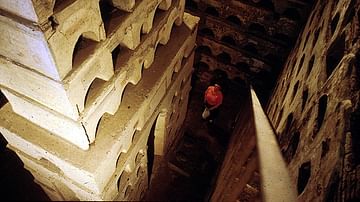
Article
Death's Mansions: The Columbaria of Imperial Rome
A columbarium is an underground chamber, which the Romans used for preserving the ashes of the dead. During the 1st and 2nd centuries CE, hundreds of columbaria lined the consular highways leading out of Rome, although now only some two dozen...
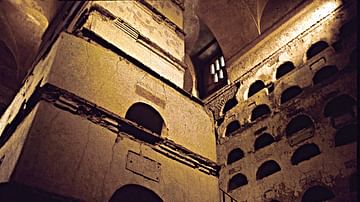
Image
Columbarium 1 at Vigna Codini: Loculi & Central Pillar
Columbarium, excavated in 1840 CE, on strip of land between Via Latina and Via Appia.
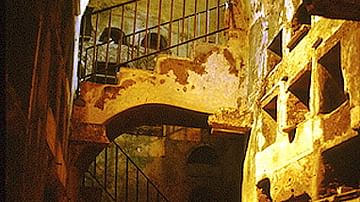
Image
Columbarium 3 at Vigna Codini: View of Double Staircase
This largely first-century CE columbarium in Rome, discovered in 1852 CE, was once lined with marble. It is very 'up-market' in that the epitaphs are all preoccupied with status, even though the deceased are slaves and freed slaves. It was...
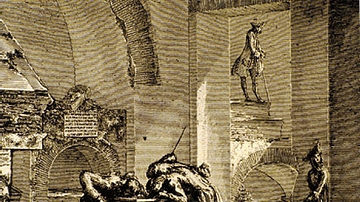
Image
Columbarium Being Stripped Bare by 18th-Century Treasure Hunters
From the 15th-18th centuries CE, the many columbaria that lined the consular highways leading out of Rome were plundered and destroyed. Consequently, one sees bits and pieces of them cemented into the walls of villas and palazzos all over...
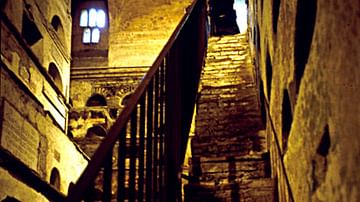
Image
Staircase: Columbarium 1 Vigna Codini
Staircase leading to the underground chamber of Columbarium 1, Rome. The central pillar supporting the ceiling is at left.
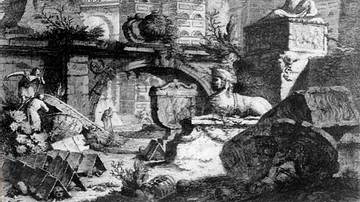
Image
Giovanni Battista Piranesi: Etching of a Columbarium
Although the title under this etching reads "camera sepolcrale inventata"—imaginary sepulchral chamber—it is likely based on the great columbaria for the slaves of Livia and Augustus, which, we know from other etchings, Piranesi did see (Ignoring...
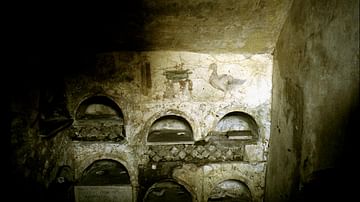
Image
Fresco of Duck and Tripod, Columbarium 3, Vigna Codini
This fresco is on the first landing of the columbarium discovered in 1852 CE at the Vigna Codini, on the strip of land between Via Latina and Via Appia. The fresco has crumbled from the wall, revealing the first-century CE opus reticulatum...

Image
View from Staircase of Central Pillar and Loculi, Columbarium 1, Vigna Codini
The loculi in the central pillar of this columbarium in Rome (discovered in 1940 CE) seem to have been reserved for the elected officers of the funeral institution (The name of one of them has been stamped several times into the wet stucco...
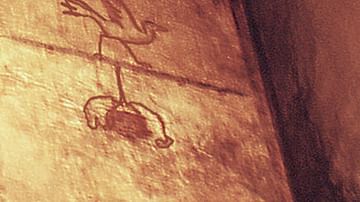
Image
Fresco of Bird and Dangling Grotesque Mask, Columbarium Vigna Codini 3
High up on the wall almost lost in the shadows above a loculus of this columbarium one can just make out the outlines of a bird walking on a flowered garland from which hangs a grotesque mask. The columbarium was excavated in 1852 CE. The...
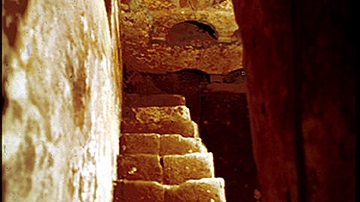
Image
The Columbarium at the Villa Wolkonsky, Rome
Before entering this columbarium, which is in the garden of the residence of the British Amabassador to Italy, I had to sign a waiver to the effect that I would not hold HM Government responsible for any mishap. And from the state of the...